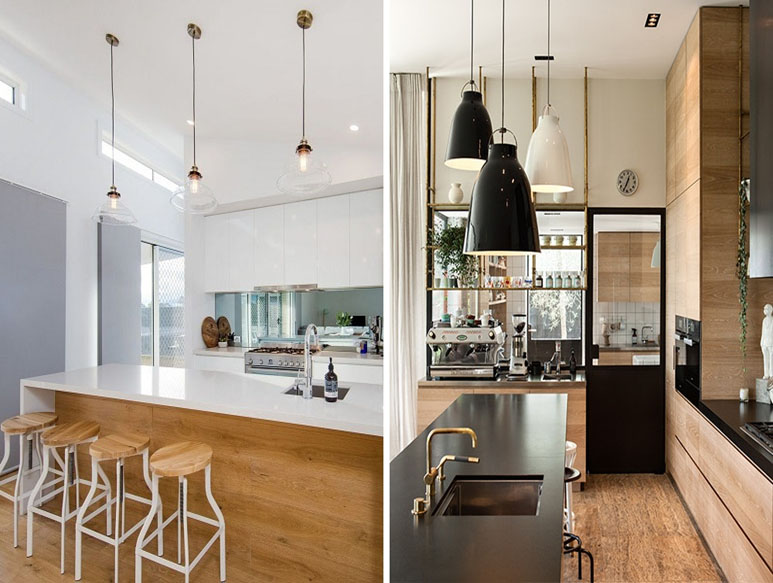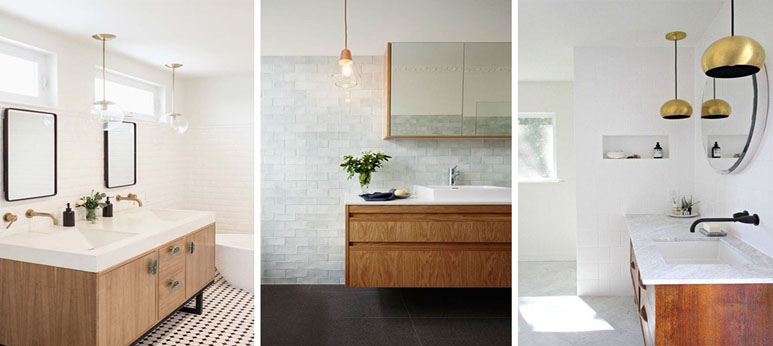As subtle as it may seem, pendant lighting has a big job to do. Its responsibilities extend well beyond the role of illuminating a space; a pendant lamp creates visual perspective and by acting as a focal point for a room, the right pendant can help to make a small room look bigger.
Whether the fitting be understated or elaborate, it is one element of an interior that really can make or break a space - If it’s wrong it will be the first thing to be noticed. Aside from having the right level of illumination (not too bright or not too dim), scale and shape play an important part too. These elements help to create visual a balance and set the tone a mood of a room.
When it comes to selecting your perfect statement pendant lamp, the options are wide and varied. This is fantastic if you know exactly what you are looking for, but exceptionally overwhelming if you don’t. So how do you narrow your search down if you aren’t sure what style, color, finish or look you’re hoping to achieve or what will work best for the space?
It’s a good question. One consideration that usually comes into play for most people renovating is budget. As such, we have selected four pendant lights suitable for varying budgets for each of the following areas:
- Pendant Lights for Kitchens
- Bathroom Pedant Lighting
- Bedroom Pendant Lights
- Dining Room Pendant Lights
- Living Room Pendant Lights
This way, everyone can achieve their desired look without compromising on style or budget.
Pendant Lights for Kitchens
Generally pendant light fittings are placed above an island bench in a single plane and in certain instances above a sink. Generally two – three pendants work for best effect, (depending on their size). Four pendants would look too cluttered or busy whereas an odd number appears the most balanced configuration to the human eye. This is referred to as the ‘Rule of Three’, however this is a guideline. In some cases two pendants can look better depending on their shape or scale, however, in some cases a even singular pendant positioned to the left or right of an island bench can be successful also. Sometimes intuition can act as the best guide and a hunch can help to be determined by a creating a sketch that is roughly to scale to see if your vision can work.

Bathroom Pedant Lighting
Determining the location of a bathroom pendant is important. The wrong placement can cast shadows over your face which isn’t ideal for applying make-up and can be quite unflattering. If placing a pendant lights either side of a vanity mirror, ensure they’re spaced evenly. This will help to prevent those unwanted shadows. An alternative option is to hang a pendant light in one or both the corners of the room. This will project pretty shadows onto the wall but won’t affect your reflection.

Bedroom Pendant Lights
Bedrooms are all about creating mood lighting. There are two main ways to achieve beautiful mood lighting. One is with a pendant located above the bed, the other is suspending a smaller pendant light each side of the bed above the bedside tables. This creates a lovely streamlined look that can make the space appear less cluttered. If hanging a pendant directly over the bed it’s best to choose one with a diffuser otherwise the light will be too bright and shine into your eyes.
Dining Room Pendant Lights
Hanging a pendant light fitting above your dining table is an instant winner! Locating an object centrally above the table is a powerful tool as it points to a centre. It helps to anchor the space and creates an overall visual balance against the heaviness of a dining setting.
Living Room Pendant Lights
A Living Room pendant light doesn’t have to be exclusively located at the centre of a room. If you want to make a bold statement and add a little drama you can do so by grouping a cluster of pendants. This can be achieved by clustering groups of 3 -5 pendants together (depending on the size of the pendants), and hanging them at varying heights. This technique looks fabulous in the corner of a living area in place of a floor lamp.
In addition to budget, below are a few main points to consider before selecting your pendant lamps.
Pendant Lighting Style to Suit Your Home
What style are your existing furniture and accent pieces influenced by? Is the style traditional, modern, classic, Scandinavian, industrial etc.? Your pendant should complement the style of your home’s interior aesthetic. Aim to select something that works well with your existing furniture and décor.
Pendant Lighting Materials and Finishes
Pendant lights are perfect for bringing warmth, color and texture to a space. Pay attention to your existing color scheme and the finishes in your home and choose a pendant fitting that’s complimentary to these colors and finishes. This will help to maintain consistency throughout the interior.
What the Right Size Pendant?
Scale and proportion play a big part in choosing the right sized pendant so it's important to pay attention to the room’s dimensions. Is the area large or small? What is the ceiling height? If a pendant is too small it will look insignificant. If it’s too large it will make the room appear cluttered and busy and obstruct sightlines. The right size pendant will compliment not overshadow.
Pendant Lighting Inspiration
Find some inspo. Refer to Interior Design magazines, or online tools such as Pinterest or Instagram to seek out some cool design ideas. This will help you to establish what your likes and dislikes are and help to get the creative juices flowing.
Pendant Lighting Placement
There are no hard and fast rules – only guidelines. Don’t be afraid to experiment when hanging a pendant/s. For example, you could try creating a cluster of many smaller lamps suspended together, or hang three pendants at varying sizes at varying heights.
How Bright Should My Pendant Light Be?
It’s important to note that the level of illumination you require from your pendant will be dependent on the types of lighting that already exist within the home. Pendant lights are generally used as decorative lighting as a feature to create an atmosphere. Generally a pendant will be used in conjunction with task lights such as down lights and lamps to ensure the correct light levels are achieved.
Pendant Lighting Dimmers & Diffusers
Putting your pendant on a dimmer switch allows for flexibility in a lighting scheme. With the turn of a dial a brighter light can be created to carry out tasks, while a softer light can be achieved for a moodier atmosphere. Depending on the location of your pendant it may require a light diffuser or use semi-opaque bulbs, to avoid intense beams of light being cast over the space.



















Your Message